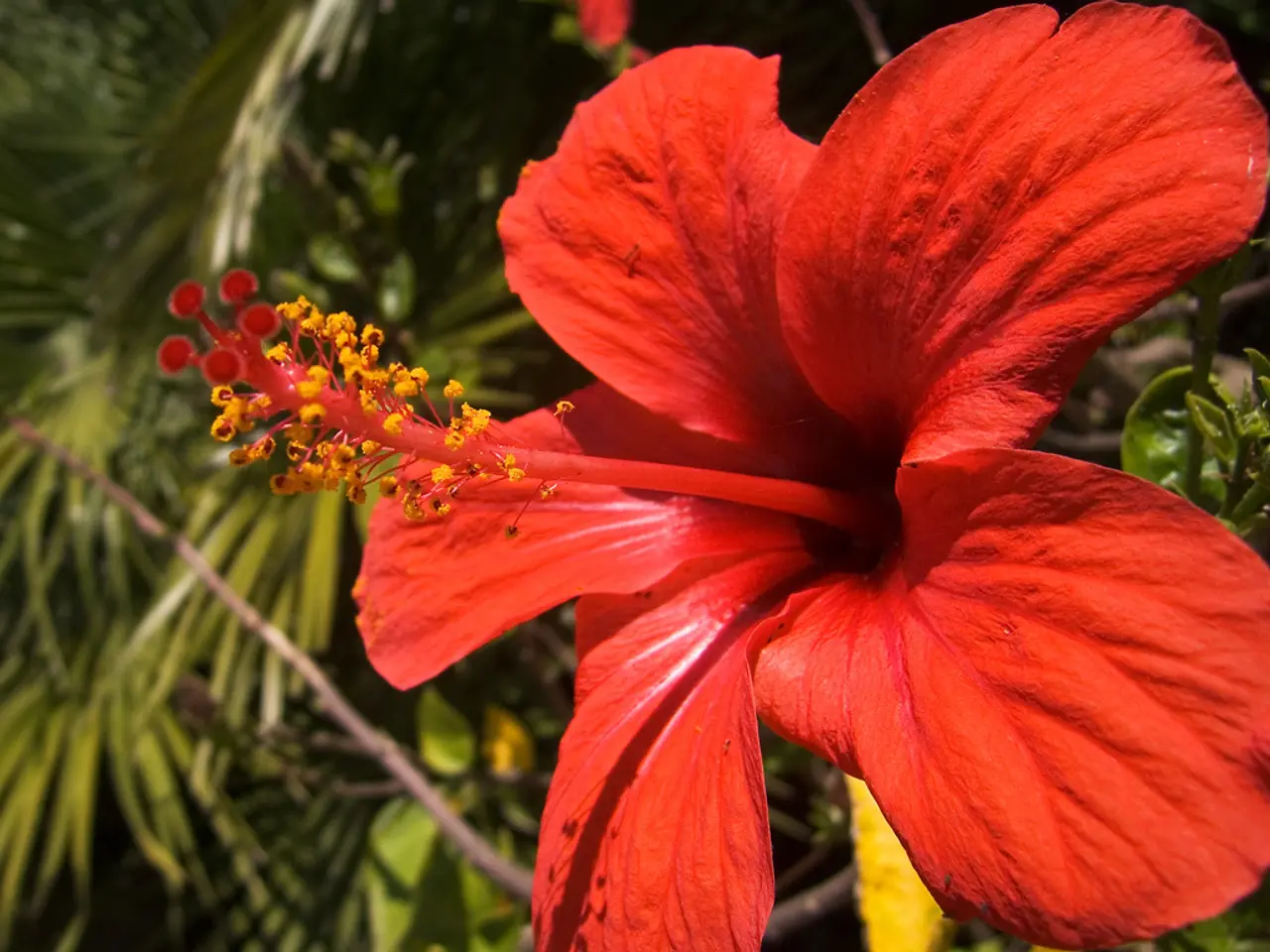Keep an eye out for common hibiscus diseases:
Hibiscus plants, known for their dazzling colors and tropical vibe, are a popular choice for many gardens. However, these plants can be susceptible to various diseases that can cause wilting, discoloration, and other symptoms. In this article, we'll explore some common diseases affecting hibiscus plants and their symptoms.
Dieback disease in hibiscus plants occurs when damage to the plant allows fungus or bacteria to enter the stem, causing foliage to wilt and the entire stem to rot away. Removing broken or damaged stems and removing debris from the garden are key to controlling dieback. Overwatering can also contribute to dieback, so it's important to ensure your hibiscus is not receiving too much water.
Leaf spot is another common disease in hibiscus plants. It is caused by the pathogen Pseudomonas cichorii and is most common in regions with significant rainfall and high humidity. Leaf spot is identified by dark spots surrounded by a lighter yellow halo on the leaves. Removing infected plant matter promptly is important to prevent its spread.
Powdery mildew, a common garden plant disease, may appear on hibiscus plants in cooler late-summer weather. It is identified by a white, powdery appearance on the surface of leaves, and if left untreated, can quickly spread across the entire plant. Removing infected plant matter promptly is important to prevent its spread.
Botrytis blight, also known as gray mold, is caused by the fungi Botrytis cinerea. This disease most commonly affects flower buds, distorting growth and covering each with a grayish fuzz. Plant matter showing signs of botrytis blight should be clipped and removed from the garden immediately.
Hibiscus wilt disease is a serious cause of hibiscus plant wilting, characterized by pathogens preventing the root system from functioning properly, obstructing the distribution of water and nutrients throughout the plant. Early signs of infection include veiny foliage and pale or distorted leaves. The process of digging and treating the roots of plants infected with hibiscus wilt disease is difficult and often unsuccessful.
Gardeners should be aware of these common hibiscus diseases and their symptoms. Regularly monitoring your hibiscus for early signs of pest infestations and fungal infections, combined with proper watering and pruning, can help reduce disease incidence. Treatments may include removing affected plant parts, using fungicides for fungal diseases, and insecticides or biological controls for pest infestations.
In summary, fungal leaf spots, powdery mildew, anthracnose, and bacterial leaf spots are typical diseases of hibiscus, with symptoms mostly involving leaf spots, discoloration, and wilting. Pest damage can complicate or exacerbate these conditions. By understanding these diseases and taking preventative measures, gardeners can help keep their hibiscus plants healthy and vibrant.
Managing the lifestyle and environment of hibiscus plants in home-and-garden settings plays a vital role in preventing the onset of common diseases such as fungal leaf spots, powdery mildew, anthracnose, and bacterial leaf spots. Monitoring plants regularly, adhering to proper watering and pruning practices, and promptly removing infected plant matter can help maintain the health and vibrancy of hibiscus plants.




